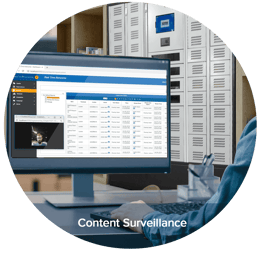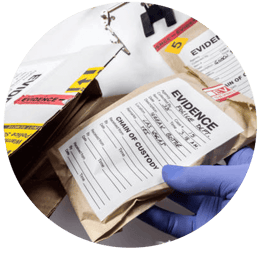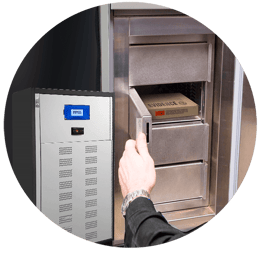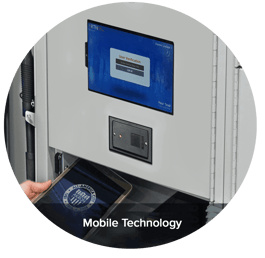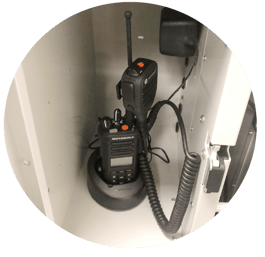By Jay Palter | January 17, 2022
Law enforcement personnel use a wide range of equipment and other materials in their day-to-day jobs. Many of those assets are necessary for resolving literal life or death situations. That means every law enforcement agency wants a reliable equipment management plan to ensure everything their personnel needs is always ready and available.
But that’s easier said than done. Every year, Law enforcement agencies (LEAs) find themselves asked to do more with less. Some might be asked to comply with new asset monitoring regulations. Others might be asked to reduce their non-Law enforcement officers (LEO) staffing budget.
No matter what, all of these law enforcement agencies are looking for new, creative solutions for managing their equipment. Smart lockers are one solution most LEAs will want to consider.
This article explains 20 of the most important benefits smart electronic lockers can offer LEAs for today's and tomorrow’s problems.
Smart Lockers Help Law Enforcement Agencies Do More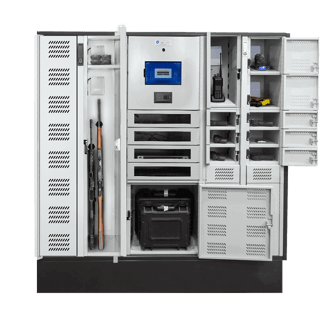
Law enforcement agencies need to find innovative solutions to the problems they face. Smart lockers are a powerful solution they should consider.
Smart lockers are computer-driven storage systems that can monitor how your personnel use them, thanks to networks of embedded sensors in the lockers themselves and in tags you attach to stored equipment. Those sensors help you verify that the correct items are taken and returned from the storage lockers. You can also extend your sensor network around your facility, so you’ll know if someone tries to take sensitive items off-site or into restricted spaces.
Advanced smart locker systems will have touchscreen access panels to authenticate users and control which locker compartments they can access. You can also prompt them with transaction checklists at sign out or return. So, for example, you can have LEOs report any faults with electronic devices right on the access panel when they return them after a shift or assignment. That can trigger an alert to your agency’s IT team to come to retrieve the faulty device, and in the meantime, the smart system will lock it down, so no one else signs it out.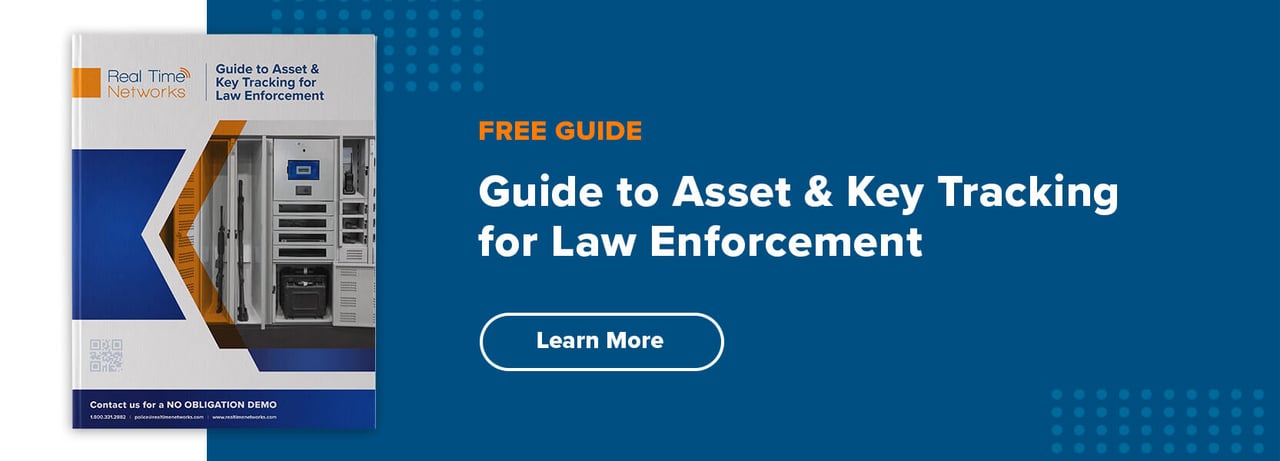
Top 20 Benefits of Electronic Lockers for Law Enforcement Agencies
Here are 20 of the top benefits that electronic lockers offer LEAs.
1. Streamline operations
Electronic lockers take care of many tedious administrative tasks so your personnel can focus on more productive work. Your officers and staff don’t need to be on-hand to facilitate every transaction. Instead, the locker system manages each transaction for them. And the integrated inventory database tracks all of the stored equipment, evidence, or other assets.
2. Track and monitor stored assets
Smart lockers can use various sensor technologies to track stored assets. One of the most popular technologies is wireless radio frequency identification (RFID). You can attach RFID tags onto held assets and even embed them in equipment. Police radios, for example, now frequently include RFID token slots for tracking.
Another form of monitoring is “content surveillance,” which monitors assets while they’re in the lockers. You can use wired USB connections to monitor stored electronic devices. Integrated scales can weigh consumable materials, like medications or OC spray canisters. And RFID tags can verify every individual component of a signed-out kit is returned.
3. Generate detailed reporting
Reports collected from a locker system’s sensor network can reveal trends you might not have noticed otherwise. For example, you can generate reports on access patterns, problem reports, or any other kind of tracking data you collect over time.
4. Provide real-time insights
In addition to providing operational insights over the long term, sensor data also can provide valuable real-time insights. For example, you can have the electronic lockers alert a sergeant if the system detects that one of their officers is returning an OC spray canister that they have discharged. That sergeant can then follow up and ensure all proper documentation gets filed.
5. Reduce losses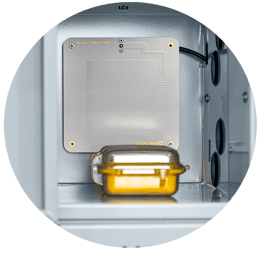
Automated transaction logging eliminates almost any chance of human error in the equipment management process. That can help significantly reduce the chance for equipment or evidence to get lost in the shuffle. On top of that, you can set curfews on sensitive asset transactions.
If the officer who signed out equipment doesn’t return it at the end of their shift, the quartermaster receives an alert, prompting them to follow up with that officer immediately. That will increase the chance that the item is recovered and returned to circulation before it gets forgotten in a car trunk, at someone’s desk, or in the back of a storage room.
6. Provide superior access control
By its very nature, almost any law enforcement equipment is sensitive and requires some level of access control. That’s usually the primary reason LEAs need to assign a quartermaster for equipment management.Smart locker systems reliably automate the process of access control. Every officer must authenticate themselves with the system and make a specific access request before the lockers release a stored item. Thanks to powerful, modern access control options, like eye scan or facial recognition biometrics, LEAs can have confidence that only authorized personnel will ever access sensitive assets.
7. Generate complete audit trails
Access control is essential, but LEAs need other ways to verify proper asset use. For example, smart police lockers can generate audit reports that agencies can use to show compliance for personnel accessing and using any stored asset.
8. Have a range of different authentication options
Modern smart locker systems offer a range of different authentication options. We’ve already mentioned biometrics, which today includes fingerprints, facial recognition, and iris eye scans. RFID tokens are also a popular, hard-to-forge option. LEAs could even consider using PIN codes or smartphone authentication apps for lower security settings.
9. Improved chain of custody
Smart locker systems' tracking and reporting capabilities make it easier to comply with evidence chain of custody standards in any jurisdiction. In addition, using a smart evidence locker to automate how you handle evidence can improve the quality of cases you can bring to trial.
10. Simplified regulatory compliance
If your LEA has equipment purchased through a federal grant, then there is a good chance there are reporting requirements attached to those funds. The comprehensive reporting available in smart locker systems makes it easy to meet any auditing or reporting requirement.
11. Easier evidence management
Smart lockers are good for more than just managing equipment. The strong access controls, security features, and reporting make them excellent tools for evidence management. You can even network several smart locker systems in your agency to dedicate one for equipment and the other for evidence.
12. Protect biological specimens with refrigerated storage
Biological samples are increasingly common evidence that many jurisdictions need to keep viable for an extended period. Modern police locker systems can include refrigerated compartments for keeping those samples ready for testing long after collection.
13. Other climate controls for electronic devices
Specimens aren’t the only assets that need climate controls. Mobile electronic devices will wear down before the end of their planned lifecycle if they’re not stored in properly temperature-controlled environments. Smart lockers can have ventilated storage compartments that keep electronics functional without compromising security.
14. “Cradle to the grave” asset tracking
Comprehensive real-time data collection allows smart lockers to track assets from the moment they enter your LEA organization to when they leave. So you’ll always have an up-to-date record of who accessed which assets, where they are, and when they’re due to return. We call this capability “cradle to the grave” tracking.
15. Faster emergency response
Smart lockers are excellent tools for day-to-day asset management. However, many users are concerned that the features that make them effective day-to-day will hinder emergency responses—for example, the strong access controls. Modern electronic lockers include emergency release functions so that even when power is out, an authorized supervisor can quickly unlock the entire locker cabinet so everyone can grab the equipment they need fast.
16. Easily integrate your security and management systems
Because they’re networked, smart lockers can integrate with other smart management systems you might be running. That makes administration easier since you can standardize on one set of user records.
17. Live monitoring for stored equipment
Wired USB content surveillance connections allow you to monitor certain stored devices. You’ll get real-time updates on any operating system issues, service alerts, or other software problems. You can then lock down the device, so no one signs it out while you wait for your IT department to retrieve it for servicing.
18. Support for a wide range of LEA equipment
Smart lockers are effective tools for storing police equipment. They’re great for tracking expensive electronics like laptops, radios, and body cameras. They are also excellent tools for monitoring kits with many individual components, like surveillance kits, radar kits, and crash bags.
19. Flexible use for all kinds of LEAs
Electronic lockers are a viable option for many different law enforcement agencies. They work well in individual police precincts and central agency armories. As we’ve seen, they can work well for evidence storage in a precinct or a crime lab. They can also hold evidence in courthouses or law offices.
20. Readies your agency for the future
Smart technology gives your agency the capabilities it needs to do more with less. We don’t know what law enforcement challenges the future will bring, but smart lockers are one of the tools available to help you be ready.Subscribe to our blog

Jay Palter
Vice President of Marketing & Partnerships
